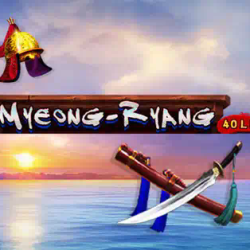As thousands of Hawaiian citizens have been displaced by intense wildfires that devastated the Maui town of Lahaina and left at least 111 people dead, locals are pleading with tourists to stay away.
The Hawaii Tourism Authority said in a statement updated on Aug. 15 that non-essential travel to Maui should be avoided “for the near future.” Many people in the region have heeded evacuation warnings, with as many as 46,000 people, including tourists, flying out of Kahului Airport since the fires broke out on Aug. 8, according to the statement.
The natural disaster was sparked by a combination of Maui’s dry weather conditions, low humidity, and strong winds from Hurricane Dora, which traveled across the Pacific Ocean around 700 miles to the south. As the fire spread, images coming out of Maui showed people jumping into the ocean to escape the billowing smoke and flames that blazed through the island. Hawaii’s Big Island has also incurred some damage from the wildfires, although not as much as Maui.
Read more: How to Help Those Affected by the Maui Wildfires
But despite this month’s catastrophe and subsequent pleas from residents, some tourists are carrying on with their holiday business as usual.
Here’s what to know about the state of tourism on the islands.
Hawaii’s tourism economy
Governor Josh Green reiterated the essential travel policy in his emergency proclamation on Aug. 13, which noted that hotels and accommodations are needed to house displaced people and aid workers. Green has also expressed a desire to work with Airbnb to ensure rentals prioritize those who lost their homes. However, he later also noted that a complete travel ban would leave many people without jobs: “When you restrict any travel to a region, you really devastate its own local residents in many ways more than anyone else,” he said.
Maui as a whole is an engine of Hawaii tourism, the state’s biggest industry. Maui received 2.9 million visitors in 2022, 31% of Hawaii’s total, and they spent $5.7 billion, according to the Hawai’i Tourism Authority. Lahaina and surrounding areas in West Maui are home to most of the island’s hotels. Lahaina has long been a significant tourist draw because of its unique history; the town was chosen to be the royal capital by King Kamehameha II in 1802 and it remained so for 50 years.
Read more: The History Lost in the Maui Wildfires
‘Now is not the time’ for tourism on Maui

Over the weekend, West Maui councilwoman Tamara Paltin shared a Facebook Live video in which she urged tourists not to travel to West Maui. She added that residents in nearby Leiali’i and Punakea cited a number of tourists still arriving in the neighborhoods to fulfill travel reservations they had made.
“We don’t want to be seeing people on vacation when we’re trying to pull our lives back together. We don’t want our roads closed because tourists can’t follow directions,” Paltin said. “If you’re a tourist, don’t come to Lahaina. I don’t care if you have reservations, now is not the time …go someplace else, please,” she urged.
Following an excursion tour on Aug.11, Maui Snorkeling, a tour company, issued an online apology for bringing tourists to snorkel in waters off Lahaina, which were still being searched for missing citizens who had jumped in to escape the fires. The company said it would donate all proceeds to Maui’s food bank.
When Paris Hilton was photographed vacationing with her husband and son at an exclusive resort in Wailea, just 30 miles away from Lahaina, it led to a wave of backlash on social media, with critics calling the decision thoughtless. Hilton reportedly arrived on the day the wildfires began and had since shared social media posts by the Hawaii Community Foundation, which has launched a fund to support locals.
How tourism changed life on Maui
In 1999, operations at Lahaina’s historic sugar mill ceased. The closure marked a turning point for Maui’s economy, as it pivoted from agriculture towards the hospitality industry. Now, the island relies on tourist wealth, and many of the wetlands that once irrigated crops have been paved over for the construction of luxury resorts and holiday rentals.
Read more: Why the Maui Wildfires Were So Deadly
Tourism accounts for around 80% of Maui’s wealth, according to the island’s economic development board, with approximately four out of every five dollars generated by the industry’s activity. A resulting surge in the cost of living has driven out many Native Hawaiians, who are often left struggling to preserve their ancestral lands. During the COVID-19 pandemic, travel rates dipped, but a post-pandemic boom in visitors coming to Maui led to stories of locals overwhelmed by the demands of tourism, which has depleted natural resources and disrupted public facilities.
In an emergency proclamation on housing published in July, Governor Green’s office noted that Hawaii is the state with the most expensive housing in the U.S., with a median price of $850,000 for a single family home. Last month, the median house price in Lahaina was some $1.5 million, according to listings on real estate website Realtor.
Meanwhile, around 36% of Maui residents are scraping along below the basic cost of living—known locally as the Asset Limited, Income Constrained, Employed (ALICE) threshold—while 16% were below the poverty line, according to 2022 statistics.
The wealth and privilege disparity between locals and tourists is only widening. In 2021, amid a summer of drought, Maui residents were subjected to fines of $500 for non-essential water use. But luxury hotels and resorts were allowed to maintain their pools and grounds to welcome as many as 8,000 travelers a day during the peak season.
What does the future of Maui look like?
It is too early to tell whether and how Maui’s wildfires will affect tourism on the island in the long term. But in the immediate future, tourism as Maui knows it is stagnant. Restaurants and shops have incurred damage, which could likely lead to job losses among the local community. Approximately one in five employees in Maui country are hired in the hospitality industry, where the average salary is $52,322, according data released by the state.
Column: The Climate Crisis and Colonialism Destroyed My Maui Home. Where We Must Go From Here
Officials aware of both the level of devastation with which residents are coping and the integral role of tourist dollars in the local economy are left walking a fine line. “Please don’t go to the west side of Maui—to West Maui. Obviously, there’s so much going on with trying to rebuild it. But the rest of Maui is still open,” Maui county mayor Richard Bissen said during a weekend press conference.
He added: “As far as tourism is concerned, that’s a major driver of our economy here.”





